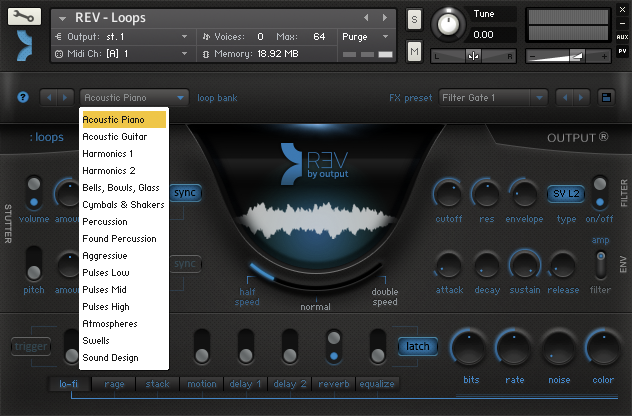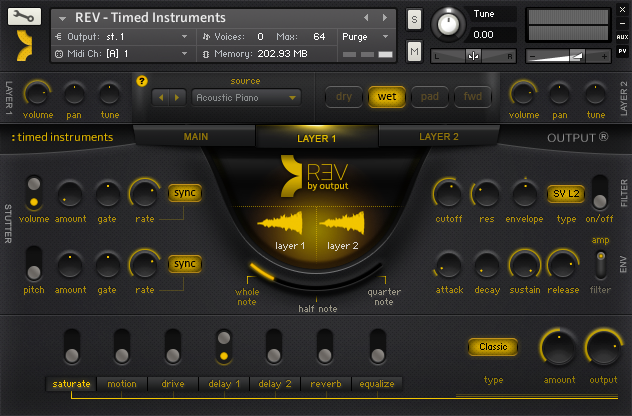Soundware remains a massive market. Products fall in the CDM inbox daily. There’s just not so much to talk about – even when the quality is exceptional. There are good products out there, and sampled libraries are especially essential for anyone working on tight deadlines – no matter the joy of recording material, anyone working for markets like TV or film likely needs some assistance satisfying clients in a hurry. It’s just that there’s so much out there, there isn’t always a story.
Output is a new sound house out of Los Angeles that found a way to tell a story, by focusing entirely on a technique. Everything in REV, as the name implies (and the video demonstrates) is … well, reversed.
The producers of the content come from a strong pedigree in sound design and composition: Gregg Lehrman (scoring), Neil Hallimen (vocals and … polka, really), and John Nye (composition and scoring, out of the excellent Berklee program) all collaborate. And it sounds so far like they’ve done really beautiful sounds.
A taste for reversed sounds is clearly widespread, too – none other than composer Harry Gregson-Williams chimes in with his desire for backwards instrumental textures in an endorsement. It’s strange: normally, artificial techniques wane in interest, yet reversed sounds for some reason always seem somewhat pleasing to the ear. They’re organically unnatural, in some sense – physically impossible (or at least warped), but with shapes that connect to our perception of sound.
Built in Native Instruments’ Kontakt. The specs:
4 engines: Instruments, Timed Instruments, Loops, and Rises. (Well, “interfaces” might be as good a definition as engines; these are different structures and corresponding UIs built atop the Kontakt engine.)
1,000 patches
14 GB of content
Built-in filters, stutter-effects, real-time and “trigger” effects, and on-screen help.
US$199 for the whole library – not bad for a 14GB collection, even if having everything in reverse is more niche.
And in a novel idea for software distribution, a partnership with Native Instruments means you can install directly from NI’s own Service Center. (Given the competition in sample engines, and for soundware, that sounds like an idea that could have some legs.)
I love the sounds, and I love that they committed to an idea. At the same time, I do wonder if some of the claims here aren’t slightly overstated. Depending on the environment, it isn’t actually that hard to reverse sounds. In fact, in cases in which it is, one might blame the authors of the tools: reversing is too often a strange afterthought. (At an engineering level, there’s absolutely nothing that says audio has to play forward or backward. It’s just an assumption by the people writing the software that you want to go just one direction. I almost always include reverse switches all over my Pd patches, for instance.)
And that makes me wonder if there aren’t other smart ways of doing this with existing arrangements, or if some nice Max for Live device or plug-in could open up more reverse audio-ism. So, I bring this up to see if other readers have pondered the same thing – or built their own backwards workflows. (Okay, all of my workflows are sort of backwards. Backwards audio playback workflows.)
That said, for pre-built instruments around the idea, REV looks promising. Check out the tutorials for more of what they’ve done.
Walkthrough:
And some instruments (more vids on their YouTube channel):
Everything else:
http://outputsounds.com/

